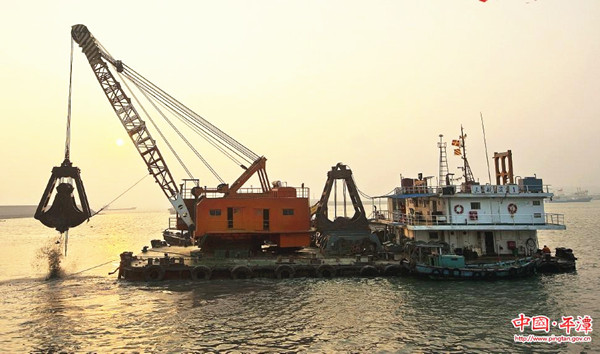Pingtan blasts reefs for landmark fishing port
( chinadaily.com.cn )
Updated: 2013-11-12
|
|||||||||
 |
An underwater demolition team working in waters off Pingtan county has been blasting an old fishing port as well as reefs, as part of the construction of a State-level port with multiple functions.
The new port – which concerns the second phase of the Dong'ao Central Fishing Port project - will have the ability to berth container ships of 5,000 tons.
The blasting work is divided into three parts: blowing up the walls, the foundations of the old port and the underwater reefs.
The team has completed the blasting of the walls and is now working on the reefs.
Zhong Guangwei, who is responsible for the blasting mission, said that the workers carrying out the blasting have to depend on the tides – as they usually drill on the reefs and clear rubble at low tide, and blow up the reefs at high tide.
He also said that they have to carefully consider the timing of the blasts, out of consideration for residents.
They thus only carry out small explosions during the day, which means that the work – which was expected to last 20 days – is now expected to last two months.
Background
The Dong'ao Central Fishing Port, which spans an area of 7 square kilometers near Yulou village in eastern Pingtan, and also near the Aoqian Passenger Terminal, is set to be a state-level port with an aquatic products market, a seafood street and a trade center focusing on Taiwan farm products.
The port will also provide services such as marine products loading and unloading, seafood processing and cold storage, logistics, trade markets and ship repairs. In addition, it will serve as a safe haven for ships during typhoons.
The port will boast a 5,000-ton fishing port and 17 600hp ports, and the accrued investment exceeds 150 million yuan ($24.6 million). On Oct 26, the local authorities received 50 million yuan from the central government, as the latest installment of the investment from the central authorities.
The second stage of the port started in March 2012, and is expected to take 450 calendar days to finish.
Edited by Chen Zhilin and Niva Whyman






